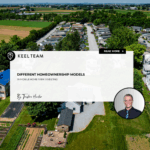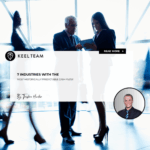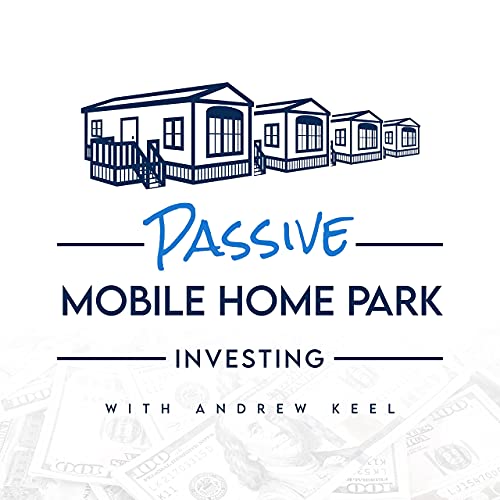Top 5 Mistakes to Avoid When Financing Mobile Home Parks
-
 Tristan Hunter - Investor Relations
Tristan Hunter - Investor Relations

Financing mobile home parks can be a rewarding investment opportunity. However, it requires a solid understanding of common pitfalls to assist with potential success. Many first-time investors face challenges navigating lender requirements, planning for capital expenditures (capex), and managing hidden costs. These issues can lead to setbacks if not addressed carefully. Here are the top five common mistakes to avoid when financing mobile home parks and how you can position your deal for potential long-term success.
1. Misjudging Lender Requirements
A common mistake investors make is underestimating the complexity of lender requirements. Unlike traditional real estate, financing a mobile home park involves unique criteria. Lenders often evaluate the property’s infrastructure, tenant mix, and occupancy rates.
Many lenders prefer mobile home parks with a high percentage of tenant-owned homes (TOHs). Trailer parks with too many park-owned homes (POHs) may face higher scrutiny. POHs often require more maintenance and management, which can signal higher risk to lenders.
To avoid issues, research lenders that specialize in mobile home parks. Prepare documentation highlighting stable occupancy, infrastructure upgrades, and strong operational performance. Ensure the property’s financials are accurate and transparent, as lenders will conduct a detailed review.
Pro Tip: Work with a mortgage broker familiar with mobile home parks. They can connect you with lenders who understand the asset class and might offer favorable terms.
Download our FREE eBook on the Top 20 things to know BEFORE investing in mobile home parks!
2. Adding POH Income to the Valuation
One of the biggest mistakes is including income from park-owned homes in the property’s valuation. Mobile home parks are primarily valued based on the lot rent income, not the income generated from renting out homes.
Including POH income can inflate the valuation artificially. This practice can mislead lenders or investors and result in overpaying for the property. While POH income can be a bonus, it should not drive the property’s overall value.
When underwriting your deal, focus on the net operating income (NOI) derived from lot rents. This approach typically provides a more accurate valuation and aligns with industry standards. If you plan to sell the property in the future, this practice helps ensure potential buyers can evaluate the property fairly.
Pro Tip: Separate POH income in your financial statements to maintain transparency. Highlight efforts to convert POHs to TOHs, as this can increase the property’s long-term value potential.
3. Overlooking Capex Planning
Mobile home parks often come with aging infrastructure that requires ongoing investment. Many investors underestimate the costs of maintaining roads, water lines, sewer systems, and electrical connections.
Failing to plan for these capital expenditures can strain your budget. Deferred maintenance issues may also lead to tenant dissatisfaction and lower occupancy rates.
Create a capex plan that addresses immediate needs and long-term upgrades. Prioritize repairs that enhance tenant safety and reduce liability risks. For example, upgrading sewer lines or replacing outdated electrical systems can prevent costly emergencies down the road.
Pro Tip: Set aside 10-15% of your gross income annually for capex reserves. This can help you have funds available for unexpected repairs.

4. Ignoring Hidden Costs
Hidden costs can derail your financing plans if not accounted for early. These can include:
- Environmental Issues: Mobile home parks with underground storage tanks or outdated septic systems may require environmental remediation.
- Utility Costs: Some trailer parks include utilities in lot rents, which can lead to unpredictable expenses. Sub-metering utilities and billing them back to tenants is one way to likely reduce these risks.
- Vacancy Costs: Vacant lots may require infill or improvements before generating income. Delays in filling these lots can impact cash flow.
To potentially mitigate these risks, conduct thorough due diligence before closing. Inspect the property’s infrastructure, review utility agreements, and consult environmental reports. Understanding these costs upfront helps you budget effectively and negotiate better financing terms.
Pro Tip: Work with professionals such as electricians, plumbers and environmental consultants during due diligence. Their expertise can uncover potential liabilities early.
5. Structuring Deals Without Flexibility
Another common mistake is structuring deals with rigid financing terms. Mobile home parks can experience fluctuations in occupancy, tenant turnover, and unexpected expenses. Deals that lack flexibility can create challenges during downturns or periods of low cash flow.
Avoid long-term loans with high prepayment penalties or inflexible terms. Instead, consider financing options that allow for refinancing or early payoff. Align your loan terms with your investment strategy, whether it’s a short-term value-add plan or a long-term hold. Furthermore, consider opting for fixed-rate loans as this can help you manage otherwise unpredictable interest rates.
Additionally, explore creative financing options such as seller financing or partnerships. These can provide more favorable terms and reduce upfront costs.
Pro Tip: Include a contingency plan in your deal structure. This can involve setting aside reserves or negotiating terms that allow for adjustments during challenging periods.
Expert Tips for Securing Better Loan Terms
Securing favorable financing terms can make a significant difference in your investment’s success. Here are some strategies to consider:
- Build Strong Relationships: Work with lenders who specialize in mobile home parks. A track record of successful deals can improve your credibility and lead to better terms.
- Improve Your Debt-to-Income Ratio: Reduce personal debt or increase your income before applying for a loan. This can enhance your financial profile.
- Showcase Value-Add Plans: Lenders are more likely to approve loans when you present a clear strategy for improving the asset’s NOI. Highlight planned upgrades, tenant retention strategies, and market demand.
- Offer Collateral: Providing additional collateral or recourse, such as other properties or assets, can lower the lender’s risk and improve your loan terms.
Why Mobile Home Parks Stand Out
Despite these challenges, mobile home parks remain an attractive investment. Historically, they have offered recession-resilient cash flow and lower tenant turnover compared to other asset classes. Unlike multifamily properties, mobile home parks have lower operating expenses and unique scalability opportunities.
By avoiding common financing mistakes and focusing on long-term planning, investors can likely unlock the full potential of mobile home parks. Whether you’re a seasoned investor or just starting, understanding these pitfalls can position you for potential success.
Investing in mobile home parks requires diligence, preparation, and adaptability. By steering clear of these five mistakes, you can navigate financing challenges with confidence and set your investment up for sustained growth potential.
Are you looking for MORE information? Book a 1-on-1 consultation with Andrew Keel to discuss:
- A mobile home park deal review
- Due diligence questions
- How to raise capital from investors
- Mistakes to avoid, and more!
Disclaimer:
The information provided is for informational purposes only and is not investment advice or a guarantee of any kind. We do not guarantee profitability. Make investment decisions based on your own research and consult registered financial and legal professionals. We are not registered financial or legal professionals and do not provide personalized investment recommendations.

Tristan Hunter - Investor Relations
View The Previous or Next Post




